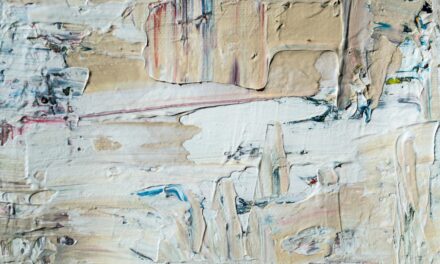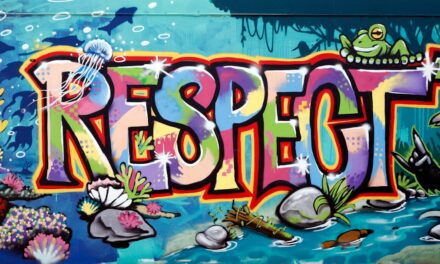In the realm of drawing and sketching, the techniques of smudging and blending hold a significant place, allowing artists to create depth, texture, and a sense of realism in their work. These methods are particularly effective when working with graphite, charcoal, or pastel mediums, as they enable the artist to manipulate the medium in ways that can evoke emotion and atmosphere. The subtle transitions between light and shadow achieved through smudging and blending can transform a simple sketch into a captivating piece of art, inviting viewers to engage with the work on a deeper level.
The beauty of smudge and blend techniques lies in their versatility. Whether an artist is aiming for a soft, ethereal quality or a more dramatic, high-contrast effect, these methods can be adapted to suit various styles and intentions. As we delve into the tools that facilitate these techniques—namely tortillons and blending stumps—we will explore how they can enhance your artistic practice, allowing for greater control and precision in your work.
Understanding these tools and their applications is essential for any artist looking to elevate their drawing skills and achieve a polished finish in their creations.
Summary
- Smudge and blend techniques are essential for creating depth and dimension in artwork, and tortillons and blending stumps are key tools for achieving these effects.
- Tortillons are tightly rolled paper sticks used for blending, while blending stumps are cylindrical tools made of paper or felt for smudging and blending.
- To use tortillons and blending stumps, simply apply them to the desired area of the artwork and gently blend or smudge the colours together to create a seamless transition.
- When choosing the right tortillons and blending stumps, consider the size and material of the tool to ensure it suits the specific needs of your artwork.
- Tips for smudging and blending with tortillons and blending stumps include using a light touch, cleaning the tools regularly, and experimenting with different techniques to achieve various effects.
What are Tortillons and Blending Stumps?
Tortillons and blending stumps are indispensable tools in the artist’s arsenal, specifically designed for the purpose of smudging and blending various drawing mediums. A tortillon is a tightly rolled piece of paper, often pointed at one end, which allows for precise application of pressure when blending. Its conical shape makes it particularly useful for reaching into small areas of a drawing, enabling artists to create fine details or soft transitions without disturbing the surrounding areas.
The texture of the paper also plays a crucial role in how effectively it can pick up and distribute the medium, making it an essential tool for achieving nuanced effects. On the other hand, blending stumps are typically made from tightly compressed paper or felt, with a cylindrical shape that provides a different approach to blending. Unlike tortillons, which are more suited for detailed work, blending stumps offer a broader surface area that can cover larger sections of a drawing more quickly.
This makes them ideal for creating smooth gradients or softening harsh lines. Both tools serve the same fundamental purpose but cater to different needs within the blending process, allowing artists to choose the right tool based on the specific requirements of their artwork.
How to Use Tortillons and Blending Stumps
Using tortillons and blending stumps effectively requires a bit of practice and an understanding of how each tool interacts with different mediums. To begin with tortillons, one should start by applying the desired medium—be it graphite or charcoal—onto the paper. Once the initial marks are made, the artist can take the tortillon and gently rub it over the area where they wish to blend.
The key is to use light pressure initially; this allows for greater control over the blending process and helps prevent over-smudging, which can lead to muddy results. When using blending stumps, the technique is somewhat similar but can be adapted based on the desired outcome. After applying the medium, an artist can use the stump to blend larger areas by moving it in circular motions or back-and-forth strokes.
This method helps to create smooth transitions between tones while maintaining a level of control over the medium’s distribution. It is important to clean the blending stump periodically by rubbing it on a scrap piece of paper; this prevents unwanted transfer of colour from one area to another and ensures that each section of the artwork retains its intended clarity.
Choosing the Right Tortillons and Blending Stumps
Selecting the appropriate tortillons and blending stumps is crucial for achieving optimal results in your artwork. Tortillons come in various sizes, from small to large, allowing artists to choose based on the scale of their work and the level of detail required. For intricate pieces that demand precision, smaller tortillons are ideal as they can navigate tight spaces with ease.
Conversely, larger tortillons are better suited for broader strokes and larger areas where fine detail is less critical. Blending stumps also vary in size and material. Artists may find that some stumps are made from softer materials like felt, which can produce a gentler blend, while others are made from firmer paper that offers more resistance.
The choice between these materials often comes down to personal preference and the specific effects an artist wishes to achieve. Experimenting with different sizes and types will help you discover which tools best complement your style and technique.
Tips for Smudging and Blending with Tortillons and Blending Stumps
To master smudging and blending with tortillons and blending stumps, there are several tips that can enhance your technique. Firstly, always start with light pressure when using these tools; this allows for more control over the medium and helps prevent accidental over-blending. Gradually building up layers will enable you to achieve richer tones without losing detail.
Additionally, consider working from light to dark; this approach helps maintain clarity in your highlights while allowing shadows to develop naturally. Another useful tip is to vary your strokes when using these tools. Instead of relying solely on circular motions or straight lines, try incorporating different techniques such as cross-hatching or stippling before blending.
This adds texture to your work and creates more dynamic visual interest. Furthermore, don’t hesitate to experiment with different mediums alongside your tortillons and blending stumps; combining graphite with charcoal or pastels can yield stunning results that push the boundaries of traditional drawing techniques.
Common Mistakes to Avoid
As with any artistic endeavour, there are common pitfalls that artists may encounter when using tortillons and blending stumps for smudging and blending. One frequent mistake is applying too much pressure too quickly; this can lead to an overly smudged appearance that lacks definition. It is essential to remember that subtlety is key in blending; taking your time will yield far better results than rushing through the process.
Another common error is neglecting to clean your tools regularly. Failing to remove excess medium from your tortillons or blending stumps can result in unwanted transfer of colour between areas of your artwork, leading to muddiness or loss of contrast. Establishing a habit of cleaning your tools after each use will help maintain clarity in your work.
Lastly, be cautious about over-blending; while smooth transitions are desirable, too much blending can erase important details that contribute to the overall composition.
Advanced Techniques for Smudging and Blending
For those looking to elevate their smudging and blending skills further, there are advanced techniques that can add depth and complexity to your artwork. One such technique involves layering different mediums before blending them together. For instance, applying a layer of charcoal followed by graphite can create rich tonal variations that are then seamlessly blended using tortillons or blending stumps.
This method not only enhances depth but also introduces a variety of textures that can make your work more visually engaging. Another advanced technique is incorporating additional tools alongside tortillons and blending stumps. For example, using a soft brush can help achieve softer edges while maintaining control over larger areas.
Each surface will respond differently to smudging techniques, allowing artists to explore new dimensions in their work.
Conclusion and Final Thoughts
In conclusion, mastering smudge and blend techniques using tortillons and blending stumps opens up a world of possibilities for artists seeking to enhance their drawing skills. These tools not only facilitate smoother transitions between tones but also allow for greater control over detail and texture in artwork. By understanding how to use these tools effectively, choosing the right ones for your needs, and avoiding common mistakes, you can elevate your artistic practice significantly.
As you continue to explore smudging and blending techniques, remember that experimentation is key. Each artist’s journey is unique, and discovering what works best for you will ultimately lead to more satisfying results in your artwork. Embrace the process of learning and refining your skills; with patience and practice, you will find that smudging and blending become second nature in your creative endeavours.
If you are interested in exploring different artistic techniques, you may also enjoy reading about the Serralves Museum of Contemporary Art in Porto, Portugal. This article provides an introduction to the museum and its collection, offering insight into the vibrant world of contemporary art. You can learn more about artistic discoveries and innovative approaches to art by visiting this link. Additionally, if you are looking for simple street art approaches, you may find inspiration in the article on wheatpaste and sticker art, which explores creative ways to make a statement through urban art.



